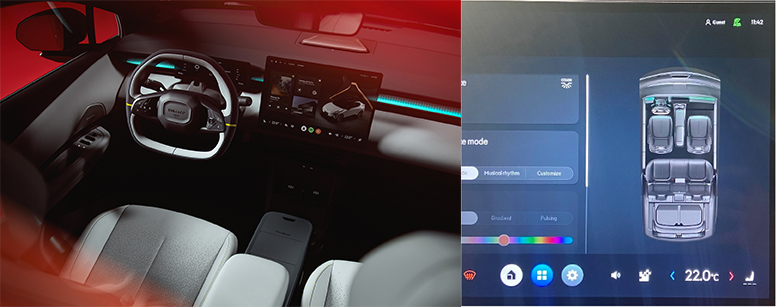By Paul-Henri Matha
Interior lighting was a bit less in my focus area during the last six years at Volvo Cars; I was focusing on exterior lighting. Previously during my time on the Renault lighting team, I did handle interior lighting. So, is interior lighting part of exterior lighting or part of the interior department at an automaker? From my current DVN perspective, I say it’s 50/50.
What directly caught my eye is the importance of RGB light sources in interior vehicles. I thought of this as a feature only in China, but I was wrong. In ams OSRAM’s Q3 financial report, they mention that interior intelligent RGB is a really fast-growing business for them with a market above €100m.

Most automakers are proposing RGB interior lighting with selectable colour on the central stack display, even on very affordable B-segment models. This is clearly now the standard, and here are some examples:
Renault 4, 5, Alpine A290
Multi Sense button on the steering wheel to activate / change ambient light
Possibility to change colour and ambiance on the central stack display

Renault 4, Renault 5, Alpine A290 logo with RGB LEDs in front of the passenger dashboard

Cadillac Optiq
Possibility to change colour and ambiance on the central stack display

Leapmotor C16
Possibility to change colour and ambiance on the central stack display

GAC Aion V
Possibility to change colour and ambiance on the central stack display

Lynk & Co 02
Possibility to change colour and ambiance on the central stack display

Hongqi EHS7
Possibility to change colour and ambiance on the central stack display

However, communication standards are not yet done. You can have LIN, CAN, UART over CAN, Ethernet, dedicated LED-IC or integrated IC into LEDs, and also different protocols from microcontroller to LED IC (IseLED, Melibu, Open-source Protocol from Osram or Nichia, etc). From a non-expert view, I think it is time to converge to a single solution to simplify, save cost, and reduce development time.






